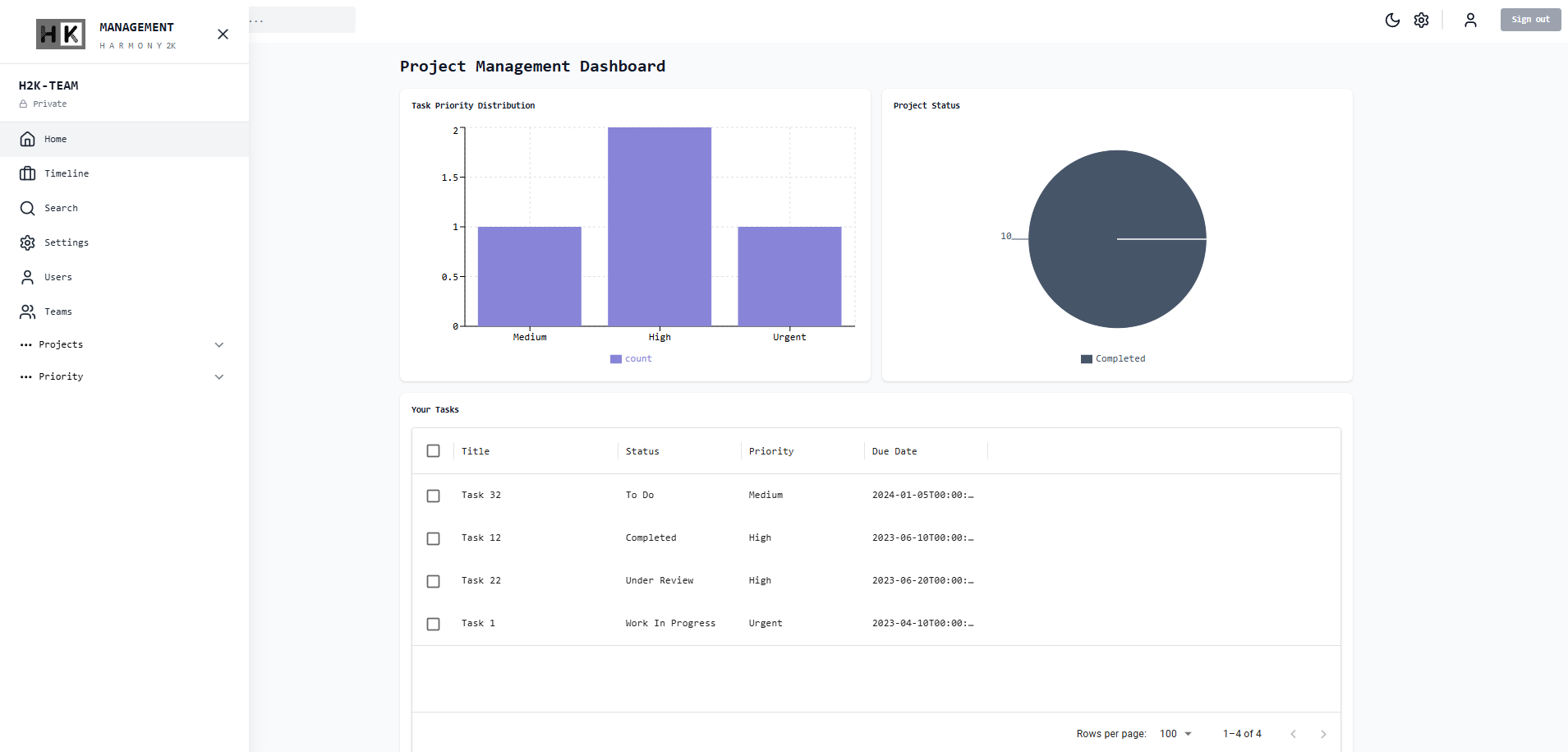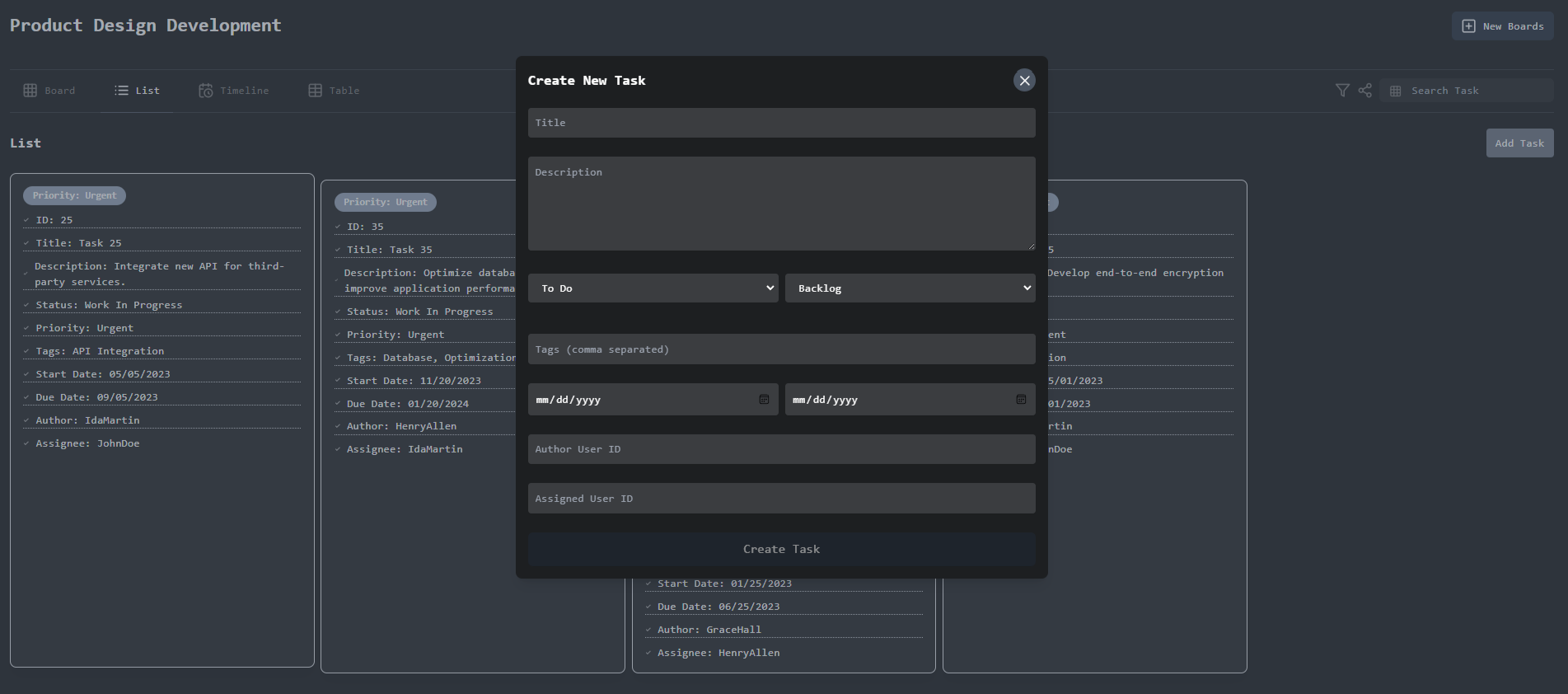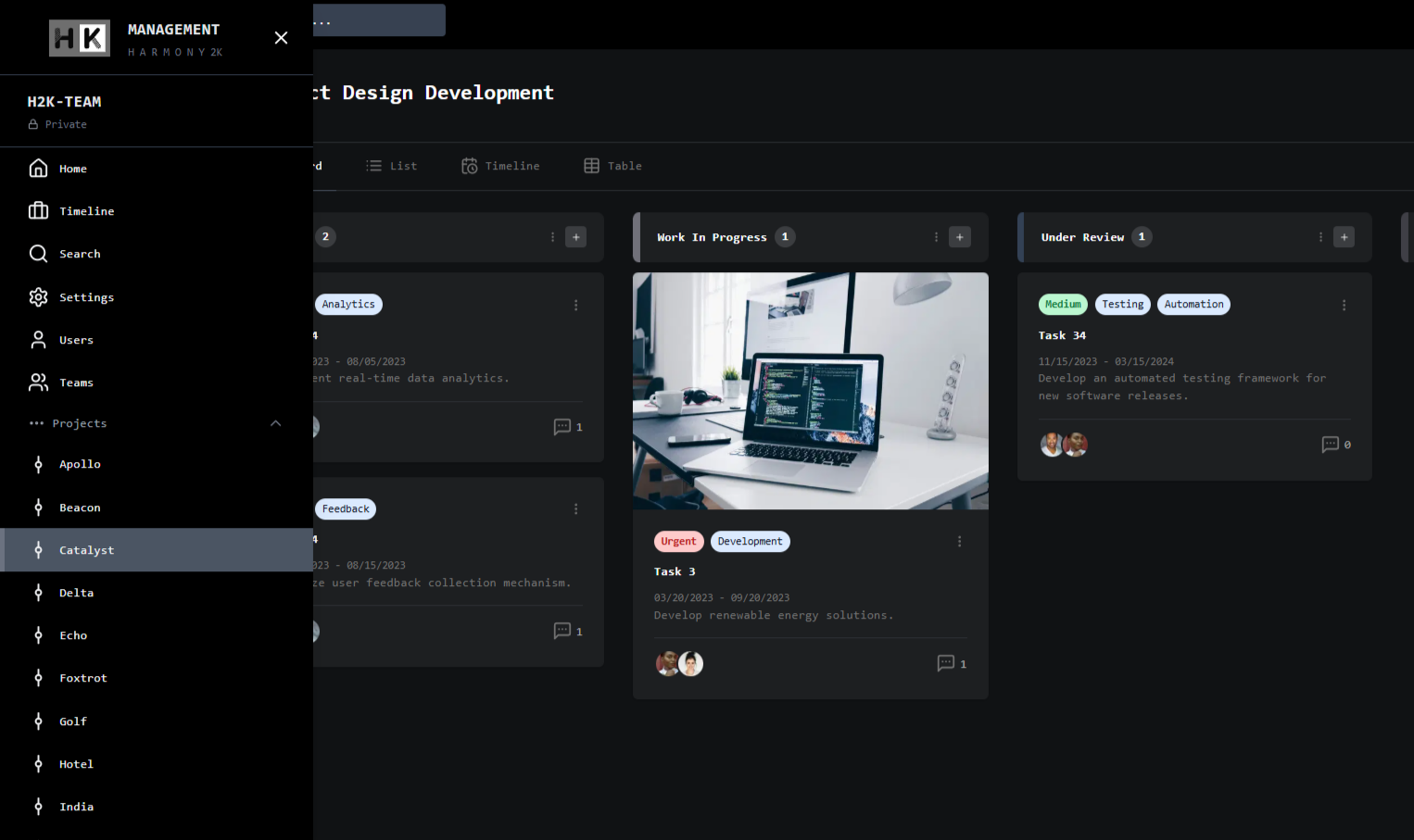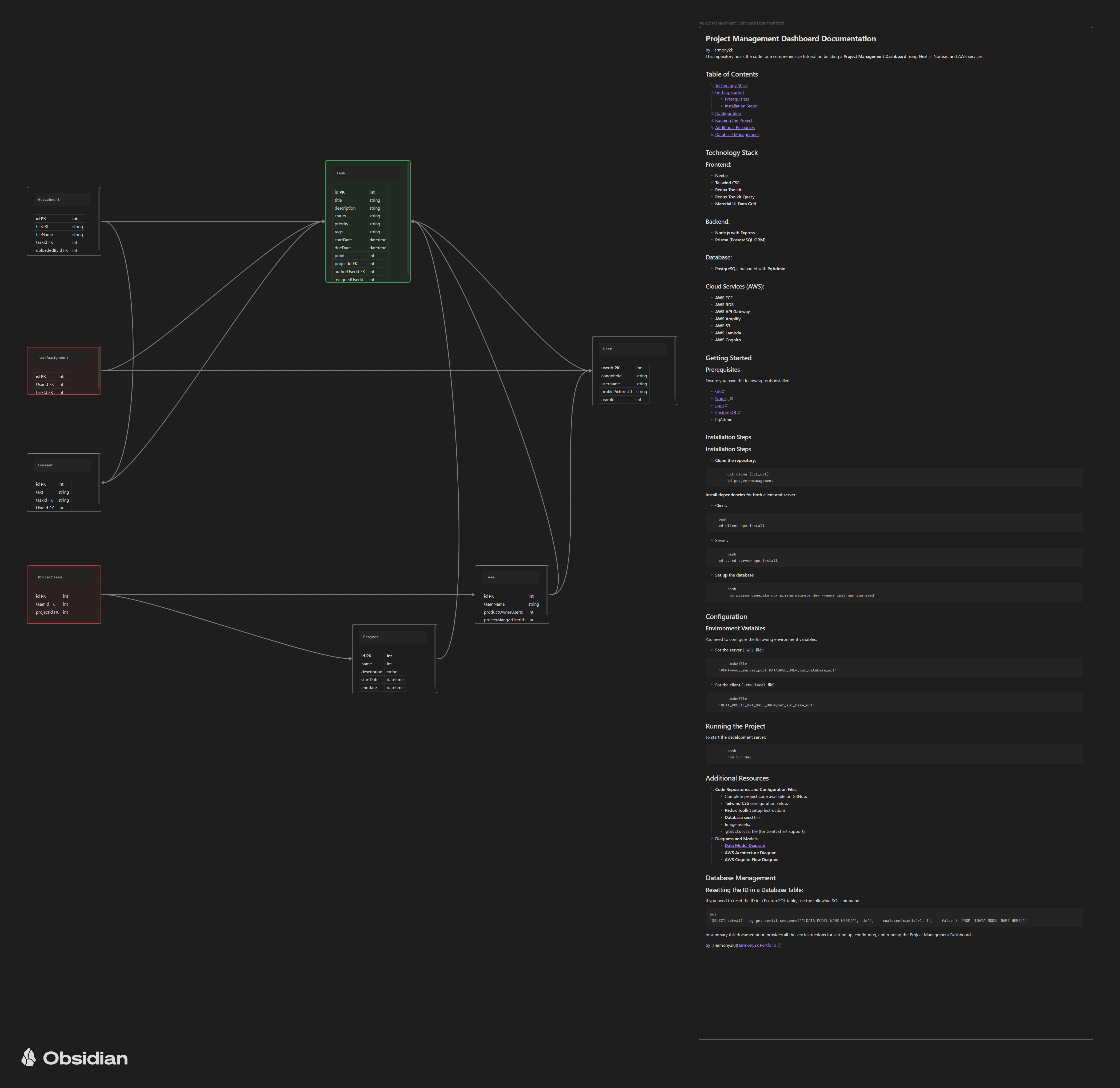Project Manger
The Project Manager application is a dynamic and collaborative task management system designed for teams to efficiently manage projects, tasks, and resources. It features a comprehensive dashboard that provides real-time insights into ongoing projects, task assignments, and team collaboration.
By leveraging modern web development technologies and cloud services, this project aims to deliver a seamless experience for users to monitor, delegate, and complete their tasks while ensuring secure data storage and scalability.
The Project Manager system currently faces some limitations and challenges that are planned to be addressed in future updates. One significant limitation is that users can only read project details from the database; they cannot add new projects, update existing ones, or delete tasks or projects. This restriction has been imposed to simplify initial development and testing, but enhancing user interaction with project data will be a key focus for future iterations. Enabling CRUD (Create, Read, Update, Delete) operations will make the platform more dynamic and user-friendly.
Another challenge lies in integrating various AWS services into the system. For first-time use, configuring and connecting services such as AWS RDS, S3, Lambda, and API Gateway proved to be a complex and time-intensive process. Overcoming these difficulties required extensive documentation review and testing. However, the AWS integration now lays a strong foundation for the platform’s scalability, security, and reliability, which will greatly benefit future updates and feature expansions.
Looking ahead, these limitations and challenges provide valuable learning experiences and opportunities for growth. Future updates will aim to enhance functionality and usability, ensuring the system evolves into a comprehensive and efficient project management solution.
The database structure consists of multiple interrelated tables to efficiently manage tasks, teams, projects, and associated data. Here's an overview based on the provided schema:
Contains task details such as title, description, status, priority, tags, dates, and points.
Connected to projects, users (author and assignee), and other related entities.
Stores file information related to tasks, such as file URLs and names.
Links to tasks and users who uploaded the files.
Maintains task-related comments, capturing user input and collaboration.
Tracks task assignments, linking tasks to users.
Stores user information, including profile details and Cognito-based authentication.
Associates users with teams.
Defines teams with fields for team name, product owner, and project manager.
Connects teams with projects and tasks.
Houses project-level data, including names, descriptions, and timelines.
Serves as a foundation for organizing tasks and teams.
Maps projects to teams, facilitating collaboration.
The Project Manager system successfully delivers a foundational dashboard with a robust database structure, allowing users to view project details, tasks, and assignments seamlessly. The integration of advanced technologies such as Next.js, Tailwind CSS, PostgreSQL, and AWS services ensures a scalable and secure platform. Despite current limitations, such as restricted user interaction with projects and tasks, the system establishes a strong baseline for further enhancements and demonstrates its potential to become a fully-fledged project management tool.
Looking ahead, the focus will be on enabling users to perform CRUD operations on projects and tasks, providing a more interactive and dynamic experience. Additionally, advanced features such as real-time collaboration, automated notifications, and comprehensive analytics will be introduced to further enhance usability. The initial challenges with AWS integration have strengthened the system’s infrastructure, paving the way for a future-proof platform that can accommodate growing user needs and industry demands.




